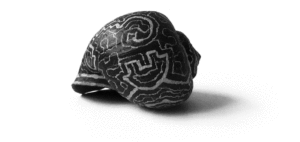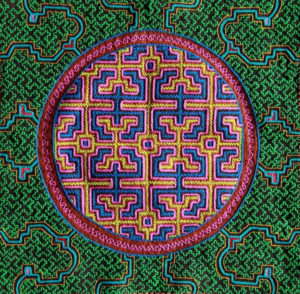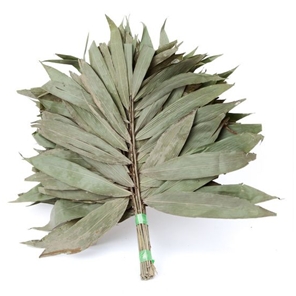THE SHIPIBO ICAROS

I was initiated into African shamanism from a young age in South Africa and was familiar with medicine songs and working with ancestors. The word ancestors in this setting are more than just departed family members you might have known. Ancestors in African shamanism refers to a greater power of all those that came before you right back to the beginning.
Calling on the force of the universe directly and having the option to call on any powerful healers and magicians within a lineage. This practice carried a sense of seriousness, respect and dedication. After my healing journey with practices from South American cultures, I worked deeper and in solitude with Ayahuasca, where I received my calling back to my roots in shamanism and to incorporate the traditions of South American shamans into what I already knew. (Read my healing journey HERE)
Following years of research and waiting for the right time, I discovered the work of Maestro Richard Down, A shaman that was trained by a Shipibo tribe of medicine healers in the upper Amazon, Peru; he sings Icaro- sacred healing songs to effect healing on a spiritual, physical and emotional level in a unique way that reminded me of African healing songs.
that was trained by a Shipibo tribe of medicine healers in the upper Amazon, Peru; he sings Icaro- sacred healing songs to effect healing on a spiritual, physical and emotional level in a unique way that reminded me of African healing songs.
Shaman Richard’s Icaros are sung directly into the Chakras or energy centres of the body. The songs come from spirit and use Shipibo vocals, pure sound and healing frequencies. Singing the healing effects of plant medicine directly into people without them taking the medicines. I trained with Maestro Richard Down and was attuned to using the Shipibo songs in a powerful way to complement my training in African shamanism to bring powerful healing to myself and others.
The icaros sung by the Shipibo- Conibo shamanic healers are very different from the icaros of shamans belonging to other ethnic groups and are especially different from the mestizo (mixed race) healers, generally of Spanish- European descent. Shipibo icaros always bear the distinction of changing the voice or vocal pitch, often alternating between a strong, masculine tone and a more delicate, high-pitched, feminine-like tone. This is known as the ‘dual choir’ singing style, and for the Shipibo shamans, it is a specific way to communicate with the feminine spirits. The spirits are not only invoked by singing this way; through this vocal technique, they can directly enter the ceremony and communicate with – and via – the Shipibo shaman by using the shaman’s own voice. This dual choir style is one of the most important elements of distinction between Shipibo icaros on one side and all other icaros on the other. By listening to Shipibo icaros, it is clearly evident how the shaman is engaged in an open conversation with their spirit helpers – including the ever-present spirit of the ayahuasca vine Nishi Ibo.
The shaman lends their voice to the spirits, and as reported by Shipibo shaman Don Leoncio, a feminine spirit teacher may appear or may be summoned during an ayahuasca ceremony, and when this happens, he is compelled to sing in the same fashion as this spirit. The shaman has to shapeshift into the spirit whilst it is transmitting its powers.
MELODIES MAGIC AND DESIGNS
The setting where icaros may be appreciated in their full power and beauty is during the ayahuasca
the ceremony, when the melodies and tunes engaged by the shaman can literally drive the otherworldly journey of a participant along the precise pathways of a mapped visual – and visionary – landscape. This is especially true of Shipibo icaros, which may be seen in a visual way through the intricate luminescent designs (quené) of the Shipibo people themselves. These designs are reminiscent of phosphonic visions and are deeply embedded with Shipibo cosmogonic and cosmological motifs, and they can be perceived in an acoustic, auditory way by people under the influence of the spirit world or held within the effects of ayahuasca.
Shipibo’s designs express the compelling need to bring the cosmic, heavenly order down to earth, to bring order into chaos, and to re-establish harmony. To the Shipibo, the universe has three cosmic regions – the upper world, represented by the great Sky Serpent (the Milky Way) – the world around them where we live every day – and the underworld. For the Shipibo- Conibo, these three cosmic regions are made of, and covered by quené designs, closely interwoven, constantly emerging, merging and incessantly shifting from the invisible to the visible realms. Their shamans act as interpreters and are the focus of the relationship existing between medicine, the cosmos, quené designs and music. Intoxicated and illuminated by ayahuasca, they can access the different realms of creation, communicate with spirit beings and navigate through the upper, middle and lower worlds.
chaos, and to re-establish harmony. To the Shipibo, the universe has three cosmic regions – the upper world, represented by the great Sky Serpent (the Milky Way) – the world around them where we live every day – and the underworld. For the Shipibo- Conibo, these three cosmic regions are made of, and covered by quené designs, closely interwoven, constantly emerging, merging and incessantly shifting from the invisible to the visible realms. Their shamans act as interpreters and are the focus of the relationship existing between medicine, the cosmos, quené designs and music. Intoxicated and illuminated by ayahuasca, they can access the different realms of creation, communicate with spirit beings and navigate through the upper, middle and lower worlds.
During an ayahuasca ritual, tobacco smoke, scented water and perfumes, and visionary quené designs (turned into magical lyrics as icaros), are the key tools of the healing method employed synesthetically – in an audio, visual and olfactory sensorial way by the Shipibo shaman, to bring about healing in the patient. Even without (and independently from) ayahuasca and tobacco smoke, this uniquely intimate relationship between icaros, quené designs and shamanism can be seen when we look at the most powerful of the Shipibo-Conibo shaman-mythic beings of olden times, the Meraya. This being was reputedly capable of becoming invisible, of being in two places at once, of shape-shifting into animals and of travelling to other dimensions. The Meraya – as the legend goes – entered into a trance inside his mosquito tent for women of the Shipibo tribe to help them to create designs. In a trance, the Meraya received a visit from the various spirits, and these are said to have painted their designs onto strips of tree bark or else to have ‘sung’ the designs themselves. The Meraya then tried to memorise these songs, imitating the spirit melodies in the form of whistles. As soon as the spirits left the mosquito tent, the Meraya attempted to draw these magical songs, bringing them down from the encrypted invisible realm of the spirit melodies to the visible realm of the designs. This legend speaks of – or at least hints at – a relationship existing between the icaros – the magical melodies and the quené – the magical designs of the Shipibos. The Meraya learnt the melodies and designs (synesthetically perceived as ‘seen and heard’) he received from the spirit world and transferred them to the visible, worldly plane. So, in a way, the icaros served the purpose of codifying the magical quené designs, which are said to have – in turn – powerful spirits like the hummingbird (Pino Heua), the anaconda (Ani Ronin) and the ayahuasca spirit (Nishi Ibo) as their masters. This relationship of ayahuasca, shamanism, music and visual designs, and the dual choir vocal technique, remains unique to the Shipibo-Conibo.
magical lyrics as icaros), are the key tools of the healing method employed synesthetically – in an audio, visual and olfactory sensorial way by the Shipibo shaman, to bring about healing in the patient. Even without (and independently from) ayahuasca and tobacco smoke, this uniquely intimate relationship between icaros, quené designs and shamanism can be seen when we look at the most powerful of the Shipibo-Conibo shaman-mythic beings of olden times, the Meraya. This being was reputedly capable of becoming invisible, of being in two places at once, of shape-shifting into animals and of travelling to other dimensions. The Meraya – as the legend goes – entered into a trance inside his mosquito tent for women of the Shipibo tribe to help them to create designs. In a trance, the Meraya received a visit from the various spirits, and these are said to have painted their designs onto strips of tree bark or else to have ‘sung’ the designs themselves. The Meraya then tried to memorise these songs, imitating the spirit melodies in the form of whistles. As soon as the spirits left the mosquito tent, the Meraya attempted to draw these magical songs, bringing them down from the encrypted invisible realm of the spirit melodies to the visible realm of the designs. This legend speaks of – or at least hints at – a relationship existing between the icaros – the magical melodies and the quené – the magical designs of the Shipibos. The Meraya learnt the melodies and designs (synesthetically perceived as ‘seen and heard’) he received from the spirit world and transferred them to the visible, worldly plane. So, in a way, the icaros served the purpose of codifying the magical quené designs, which are said to have – in turn – powerful spirits like the hummingbird (Pino Heua), the anaconda (Ani Ronin) and the ayahuasca spirit (Nishi Ibo) as their masters. This relationship of ayahuasca, shamanism, music and visual designs, and the dual choir vocal technique, remains unique to the Shipibo-Conibo.

A further distinctive mark of Shipibo shamans is how they conduct their ayahuasca ceremonies. These are held almost always without the generally present Shacapa fan. The shape is a musical rattle, made from the leaves of certain plants (or, in some cases, bird feathers), which is used almost everywhere else in the Amazon as an accompaniment to the singing of icaros, and to clean away negative energies.
The icaros – whether used for healing, cleansing, protection, love magic or doing harm – have power.
They are not just songs, they are magical tunes. More research is needed if we are going to unravel the mysterious relationship between icaros and the other important aspects of Amazonian shamanism, as all are inextricably linked with the Amazonian shaman, versed in communicating with the spirit world along precise, coded musical pathways – conveyed – in the Shipibo world, in musical designs.
Credit to the amazing writing and explanation of Icaro at https://www.thewhitearrow.net/about-the-icaro
